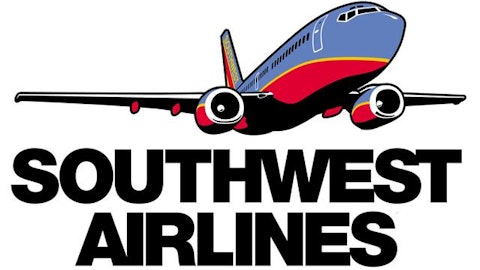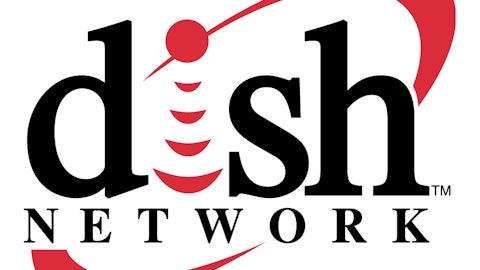I have been a lifelong American Airlines customer when flying in the US, however, recently I have started to look at JetBlue as it is a common sense low cost option. Most airlines in the western world today are characterized by large inefficiencies, high costs, and zero profits. Jet Blue is the airline that bucks the trend.
Combining quality with low prices
The founder of JetBlue Airways Corporation (NASDAQ:JBLU), David Neeleman, intended JetBlue Airways Corporation (NASDAQ:JBLU) to be a low-cost option but also an option which brought “humanity back to air travel.” His approach is very much ingrained in the tradition of JetBlue Airways Corporation (NASDAQ:JBLU) and they have one of the most extensive customer service programs. J.D. Power & Associates have ranked it ‘highest in customer satisfaction among low cost carriers in North America’ for eight years running. Many of JetBlue Airways Corporation (NASDAQ:JBLU)’s key amenities have been copied by other airlines because they were so successful at JetBlue Airways Corporation (NASDAQ:JBLU).
JetBlue Airways Corporation (NASDAQ:JBLU) mainly flies to destinations within the United States, therefore, it is competing mostly with the domestic carriers like Southwest Airlines Co. (NYSE:LUV)’s and Delta Air Lines, Inc. (NYSE:DAL). Southwest Airlines Co. (NYSE:LUV) is the world’s largest low-cost carrier and it carriers the most domestic passengers of any airline. It offers competitive air fares and flies to 42 states. JetBlue modeled its structure based on what Southwest Airlines Co. (NYSE:LUV) offers, and it attempted to improve on it. Delta Air Lines, Inc. (NYSE:DAL) is a much older airline that either Southwest or JetBlue (it was incorporated 84 years ago), and it is the largest airline in the United States. It tries to emphasize quality and service over air fares as it has struggled to compete with the lower cost carriers in recent years.
The company’s most appealing factor is the low-cost structure of the airline. JetBlue also has a very high utilization rate for its aircraft allowing it to spread the fixed costs across a large amount of flights. These factors combined with extremely low distribution costs and a very efficient workforce provide it with a significant cost advantage over the other low-cost airlines. Furthermore, The average age of its fleet is less than five years, younger than most of its competitors. This allows a more fuel-efficient fleet and a easier fleet to manage.
As a result of these factors, JetBlue has a high gross profit TTM of 65.5% of revenue. When contrasted with Southwest Airlines’s gross profit of 58.1%, its cost advantages become clear. Its cost of revenue is 7.4% lower than Southwest’s. Southwest is the only major airline with a gross profit even close to JetBlue’s. For example, Delta Air Lines, Inc. (NYSE:DAL) has a gross margin of just 45.38%. JetBlue’s operating margin TTM is also significantly higher than that of Southwest’s (6.81% vs 3.92%). As the airline industry is becoming more available as a commoditized product, it stands to reason that the lower cost airlines will benefit from this as they will seem the more attractive option for new customers. Therefore, JetBlue should continue to see strong growth in the US for the next few years while its higher cost competitors suffer.
Another hallmark of JetBlue is its strong management at every level. It has managers who have already shown success at other low cost airlines and has transferred that wealth of experience into JetBlue’s structure. Several of the key employees at JetBlue have had experience at Southwest Airlines, another low cost carrier.
JetBlue also has many opportunities for expansion. The online world represents a vast potential market for the airline and so do the emerging markets. Unlike many other airlines JetBlue has not diversified yet and so it will have these synergies and economies of scale which it can benefit from in the future. 60% of its business is based out of New York (figure from www.morningstar.com), and consequently it is very reliant on this one market. Even though this might seem like JetBlue is overly reliant on the city of New York, this exposure has also created a strong brand image and an ingrained culture of JetBlue.
JetBlue’s financials are also very attractive compared to the industry as a whole. It has a price to book of 1.0 compared to an industry average of 2.6, and a debt to equity of 1.2 versus 2.0 for the industry. It also has a higher 3-year average revenue growth (14.9%) than the industry, and a higher 3-year net income growth (30.2%). However, it does have slightly worse margins than the industry average due to its low cost attitude. Nevertheless, JetBlue’s financials as a whole are very compelling. This is illustrated by its low PEG figure of 0.49.
Bottom line
JetBlue’s low cost, high customer service approach will allow it to continue to dominate growth in the airline industry over the next few years. It is definitely worth a look at when creating a diversified portfolio as it will continue to reward shareholders.
Rupert Nicholson own shares in Jet Blue. The Motley Fool has no position in any of the stocks mentioned. Rupert is a member of The Motley Fool Blog Network — entries represent the personal opinion of the blogger and are not formally edited.
The article Jet Blue: Efficient Management In an Inefficient Era of Air Travel originally appeared on Fool.com is written by Rupert Nicholson.
Copyright © 1995 – 2013 The Motley Fool, LLC. All rights reserved. The Motley Fool has a disclosure policy.



